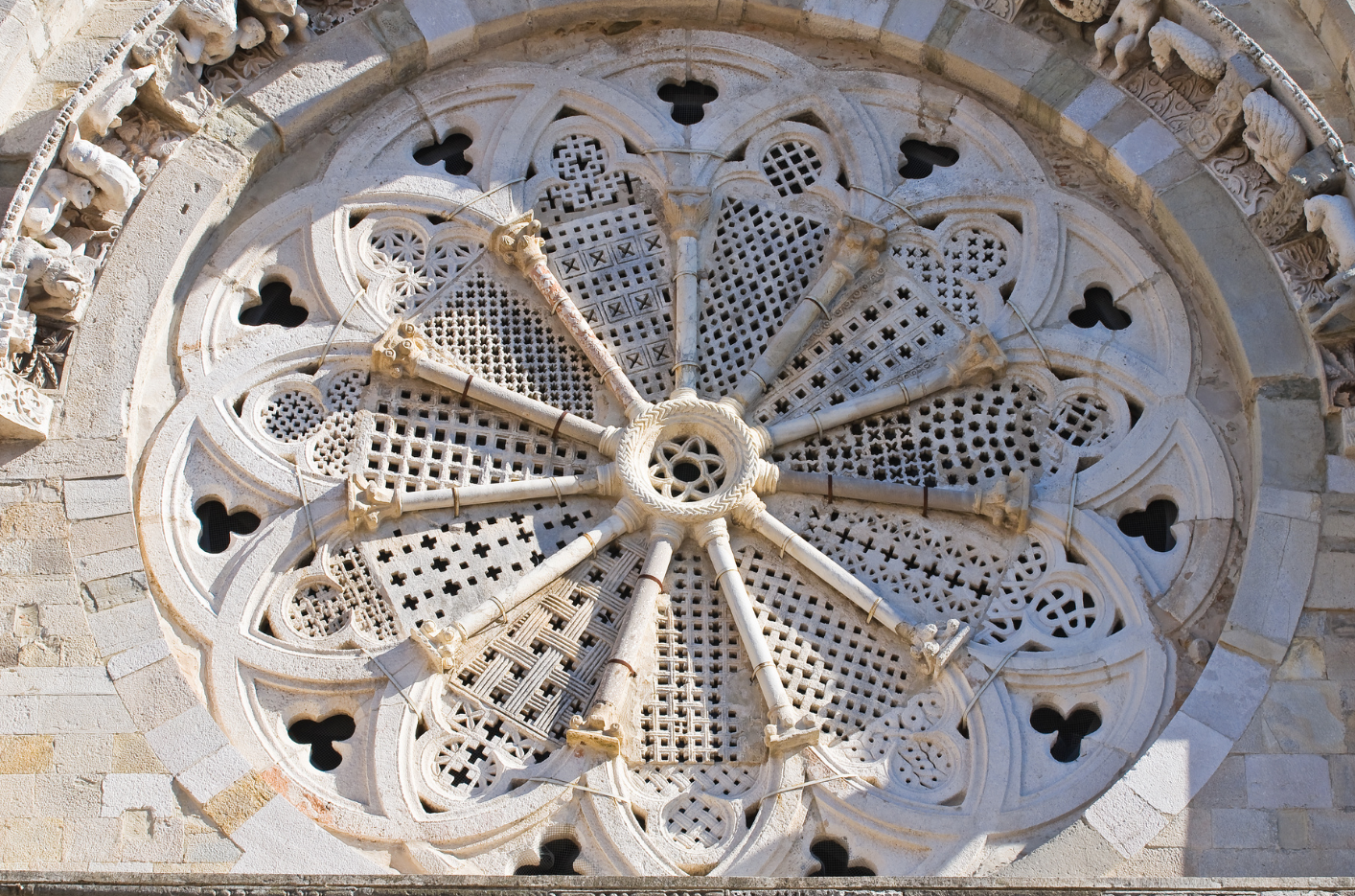
If you want to visit a beautiful city of art but also enjoy remarkable landscapes in the area, the city of Troy is the perfect destination for you. Troia lies on the slopes of the Daunia Mountains dominating the expanse of the Tavoliere delle Puglie, a town with ancient origins, probably prior to the Punic wars and for this reason, rich in history, traditions, beautiful architecture and food and wine culture. When we talk about the city we immediately think of the magnificent Cathedral dedicated to the Assumption of the Virgin Mary, a building of rare beauty. To reach the church, follow one of the main city arteries, via Regina Margherita, which will accompany you up to the steps of the Church

Stand in front of the elegant main façade to admire the decorations on the facade and the beautiful rose window, a great example of sculptural technique. The rose window alone is already a work of art in itself, eleven columns arranged in a radial pattern interspersed with stone "wedges" worked with the "openwork" sculptural technique in such a way as to look like lace embroidery. The aesthetic choices implemented hide precise symbolic meanings, for example the number of columns is that of the apostles faithful to Christ, the small circle in the center of the rose window is the symbol of eternity with the cycle of death and resurrection, above each column there is a shape composed of three lobes that symbolizes the trinity.

To access the interior of the church, you go through a beautiful bronze portal carefully worked and in which the builder of the door, the bishop patronizing the construction of the cathedral and two dragons symbolizing the evil to be defeated to conquer the treasure are represented. that the church guards. Entering the church and observing the development of the naves, you immediately notice an asymmetry in the position of the apse. This choice is explained because the asymmetry improves the acoustics, and also seeing the plan of the church with a Latin cross, the slightly displaced apse recalls the reclining head of Jesus Christ on the cross.
This church was the casket of a very rich treasure; just think that in the immediate vicinity there is the Museum of the Treasure of the Cathedral of Troy, set up with furnishings, sacred vestments, manuscripts and parchments coming mainly from the Cathedral. In particular, the museum houses three Exultets, parchment rolls about 11 meters long with the text, songs and illustrations relating to the Easter announcement. During the Easter Vigil, the Exultet was unrolled and read with the faithful. There are only thirty-one of these works in the world and the city of Troy has three of them!

At the end of the visit to the museum we can resume via Regina Elena to reach the Civic Museum which exhibits finds and works from the Roman, medieval, modern and contemporary periods and continuing to walk the street we reach the Church of San Basilio. The Church of San Basilio, probably of early Christian origin, is the oldest place of worship in Troy and fortunately has preserved all its beauty, elegance and simplicity over time.
After having known the treasures of art, we must necessarily try the gastronomic delights that the area offers. Products of the highest quality and km0, are the secret of genuine and tasty recipes, inviting dishes that strike for their simplicity and goodness that will make the lunch break a moment of great pleasure. Depending on the season you can taste lampascioni, small onions with a slightly bitter taste, broad beans and chicory, orecchiette and broccoli, cooked bread soup, pettole, aubergine and peppers ciambotta. Wine connoisseurs are spoiled for choice. This is the territory of the Uva di Troia or Nero di Troia, a vine that gives the wine a beautiful ruby red color, it is the area of the Cacc'e Mmitte doc that will exalt with taste the second courses based on meat and the tasty first courses with meat sauce .
Alberto Longo distanza 110 Km circa 90 min. in auto scopri la cantina